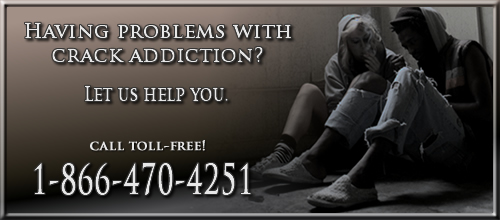Crack Addiction
- Stages Of Crack Addiction
- Signs Of Crack Addiction
- Crack Addiction Treatment
- Crack Addiction Withdrawal
- Crack Addiction Statistics
- Crack Addiction Behavior
Crack Information
Crack Effects

History of Crack
Crack History: Cocaine Popularity
In the 1970's, cocaine use was very popular. In 1972, President Nixon declared a “War on Drugs” ,however, the overall American opinion toward cocaine in the 1970's was rather indifferent. A Newsweek article written in 1977 demonstrates this opinion: “taken in moderation, cocaine probably causes no significant mental or physical damage and a number of researchers have concluded that it can be safer than liquor and cigarettes when used discriminately.” During this time in history, most people felt that cocaine did not pose any real threat and Many viewed the drug as the “marijuana of the 1970's”. During this time, cocaine was usually associated with successful young businessmen and glamorous celebrities because of the high financial expense for the drug. This fueled even greater popularity for the drug as well as further set the opinion that cocaine is a harmless and enjoyable drug.
Crack History: Freebase Cocaine
Throughout the 1970's, Freebase cocaine (purified form of powder cocaine) was also being used although it was less popular. Freebase cocaine users tended to share the same social class and were generally rich, middle class and white. Freebase cocaine was made by “cooking” powder cocaine with ether, a highly flammable liquid. Although this process produced an extremely pure form of cocaine, it did not grow in popularity due to the tricky process to make it and the danger of fire and explosion.
Crack History: The Introduction of Crack Cocaine
The major factor that led to Crack cocaine's popularity in the early 1980's was the fact that it was simple and cheap to manufacture. While powder cocaine's popularity decreased in the middle class in the 1980's, Cocaine supply also increased, reducing the price significantly. Crack provided a quick, intense high for $5 or $10. For sellers, crack was a lucrative product – easy to make and desired by a huge consumer base for whom powder cocaine had previously been inaccessibly expensive. The association of crack with poor, urban areas where it was sold, and the violence connected with the rapid expansion of the crack market, changed the American perception of cocaine. From 1986 to 1992 there was an explosion of news coverage of crack and fear of an ‘epidemic’ of drug use in the ghettos.
Crack History: Social Unacceptance
Newsweek, almost ten years after printing the article claiming cocaine was relatively harmless, published a series of articles about the dangers and extremely addictive qualities of crack cocaine. Myths of the ‘crack baby’ and the drug crazed, violent ‘crack head’ were born and, despite their limited foundation in reality, they remain the image of crack users.
By the mid-1980's, Americans no longer tolerated cocaine as a benign, recreational drug. As a result, the Congress passed the Anti-Drug Abuse Acts of 1986 and 1988, setting harsh punishments for those found trafficking in or possession of cocaine or crack. Many states followed suit, setting mandatory minimum sentences for drug violations, which vary in severity depending on the state. Although cocaine use has decreased since the 1980's, crack use is at about its late 1980's level (NSDUH). Popularly, use of the drug is still considered extremely dangerous and socially unacceptable.
